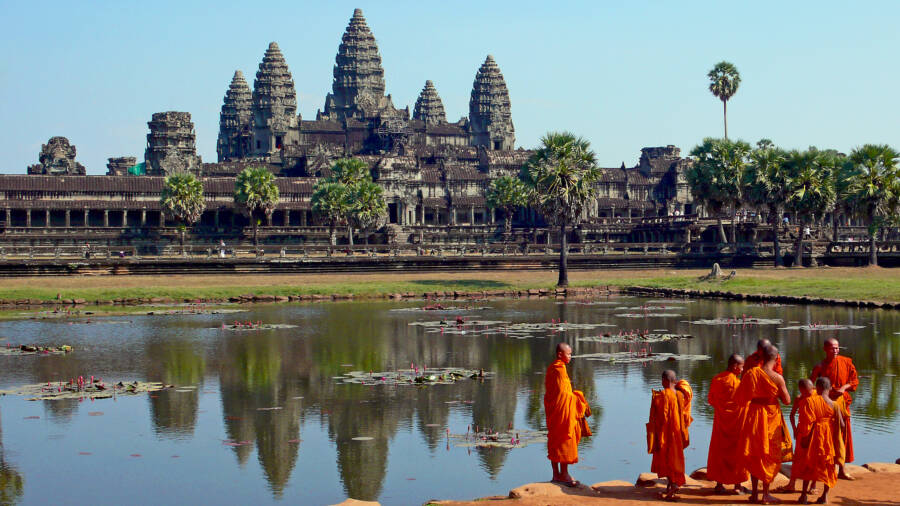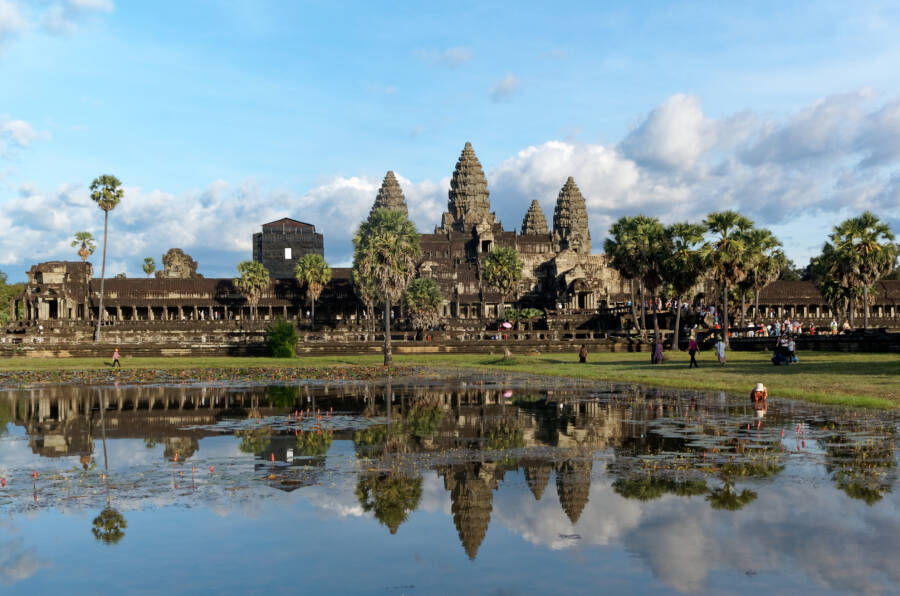Angkor Wat: The Jungle Temple That Never Truly Vanished

sam garza/Wikimedia CommonsBuddhist monks stand by a reflection pool at Angkor Wat.
Built in the 12th century by King Suryavarman II of the Khmer Empire, Angkor Wat stands as the world’s largest religious structure, covering some 400 acres — about half the size of Central Park.
The city of Angkor served as the royal center from which a dynasty of Khmer monarchs ruled one of the largest, most prosperous, and most sophisticated kingdoms in the history of Southeast Asia. At its peak from the 9th to 13th centuries, this magnificent city represented the zenith of Khmer architecture and power.
Angkor Wat itself was originally conceived as a vast funerary temple dedicated to the Hindu god Vishnu, and its five central towers symbolized the peaks of Mount Meru, the dwelling place of the gods in Hindu mythology.
After the Cham people sacked Angkor in 1177, Angkor Wat was transformed into a Buddhist shrine under King Jayavarman VII, completely redefining its purpose as a religious site and changing its future forever.

Jakub Hałun/Wikimedia CommonsAngkor Wat’s central — and most famous — structure.
Unlike many “lost” cities, Angkor Wat was never totally abandoned. Theravada Buddhist monks maintained the temple, which remained an important pilgrimage site and continued to attract European visitors. However, after the early 15th century, when Angkor was abandoned as a capital, the site fell into relative obscurity. Then, explorer Henri Mouhot “rediscovered” it in the 1860s when the French colonial regime was established in Cambodia.
The 20th century brought both threats and salvation to the lost city. Restoration efforts were suspended amid the political unrest that engulfed Cambodia in the 1970s, leaving the complex vulnerable to decay and looting. Today, however, it’s a UNESCO World Heritage Site and a popular tourist destination.





